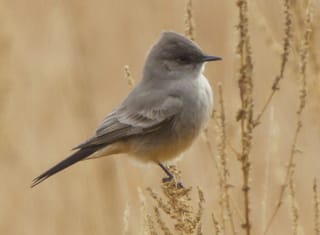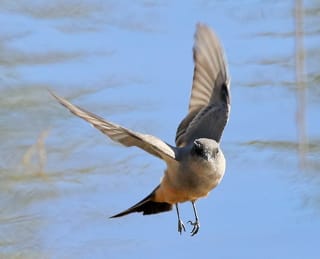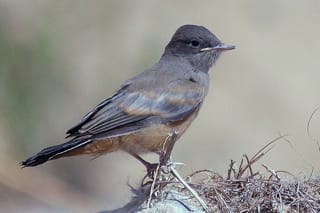Initially this guide displays common birds of all types that are flying right now in our area. Use the selectors below to view rare birds, view birds flying any time, restrict the output to a certain shape of bird, or search by name.
New Mexico is on the western edge of the Central Flyway which is one of the major migration pathways between north and south for birds traveling between breeding and wintering grounds along the Rocky Mountains. This has resulted in the state having an incredible diversity of birds with over 550 different species reported. A little more than half of this number are sighted annually on the Pajarito Plateau. Some of these birds are full-time residents, some migrate here for a few weeks or months, and other are only seen briefly as they pass through the region.
This guide features many of the birds known to frequent Los Alamos county by when they are likely to be seen in the area. You can get additional information on local birds by joining PEEC Birders or going to the eBird website. eBird also includes lists of rare bird sightings and birding hot spots.
Bird References
Birdweb
Cornell Lab of Ornithology
eBird
eNature
Institute for Bird Populations
National Audubon Society
New Mexico Ornithology Society
What Bird
xeno-canto
Subject Area Experts (all guides)
Steve Cary (butterflies)
Beth Cortright (insects)
Terry Foxx (invasive plants)
Leslie Hansen (mammals)
Richard Hansen (fish, mammals)
Dorothy Hoard (butterflies, trees)
Chick Keller (flowers, herbarium)
Shari Kelley (geology)
Kirt Kempter (geology)
Garth Tietjen (reptiles)
David Yeamans (birds)
Web Development and Content Management
Pat Bacha
Jennifer Macke
Graham Mark
Akkana Peck
Contact
Please contact us for local nature questions and sightings. We welcome comments, corrections, and additions to our guides.
For more information about local nature, please visit our Nature Blog or subscribe to PEEC This Week.
Make Selection
 Photo: adult by Mouser Williams  Photo: adult by Bob Walker  Photo: immature by J.N. Stuart |  Say's PhoebeSAPH (Sayornis saya)Family: Tyrannidae (Tyrant Flycatchers) Size: 7 - 8 in (18 - 20 cm) Flies: Feb 15 - Nov 15 Morphology: adults are brownish gray above with a reddish-brown belly, blackish tail, a gray breast, a head feathers that is sometimes raised into a small peak; immatures are similar to adults but browner and may have a buffy wing bar Status: native; locally common Food source: feeds almost entirely on insects with some spiders and millipedes Habitat: dry sunny areas, often near buildings The Say’s Phoebe is most often seen prominently perched in low shrubs or on rocks. They typically catch insects by darting out and grabbing them in mid-air, picking them off of foliage, or scooping them up from the ground. They can also hover low over fields trying to spot prey. Like other phoebes, Say’s Phoebes have a habit of wagging their tails but, unlike other phoebes, they often live in very dry areas. Males defend a nesting territory by singing. Nests are cup-shaped and made of grass, weeds, and other materials but no mud like other phoebes. Placement of a nest can vary from on a rocky cliff to a man-made structure. Young leave the nest in about 2 weeks after hatching. There are typically 1 to 2 broods per year. Info Photos Range Frequency |
